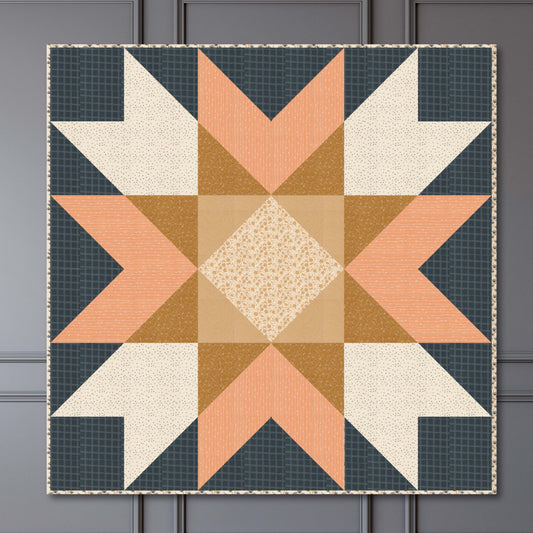This is a question that a lot of quilters have, and one that I couldn’t easily answer! So I went on a hunt for all the information about what differentiates good quality fabric from not-so-good quality fabric.

Disclaimer About Fabric Quality:
It’s right about now that I should put in a disclaimer that I have no problem with anyone using any type of fabric that they can find available to them. Seriously, when I was learning how to quilt, I had no idea there was a difference in fabric quality. You do you!
And there is also something to be said about recycling fabric from other sources, which may have unknown origins and/or could be considered "low quality." In the end, use the fabric you feel most comfortable using!

However, if you're out looking at fabric and want to know some easy ways to tell if that cute floral print you're holding is high quality...
Then here are 3 tips to help you determine if the fabric you have (or want to buy!) is good quality:
3 Ways to Tell if Your Quilting Fabric is Good Quality
1. Fabric has a high thread count

Good quality 100% cotton quilting fabric usually has a minimum of 60 threads (lengthwise and crosswise) per square inch.
I know you’re wondering the same thing I am, how in the world do I know what the thread count is? I’m not about to whip out my magnifying glass to count threads.
There are some easy ways to tell if it’s a high thread count:
-
it will be smooth to the touch;
-
it won’t fray as easily (more threads = tighter fabric = less fraying);
-
higher thread count fabrics usually have crisper prints.
Look for those things, and it might be a high thread count!
2. The Fabric is Sold at Your Local Quilt Shop
Now this isn’t a guarantee, but it is usually a great way to find high quality fabric. Usually, quilt stores pride themselves on carrying fabric that is perfect for quilting!

Talking with the employees may help lead you in the direction of fabric lines that are known for good quality.
You can find a local quilt shop near you by searching Google maps. If you identify a manufacturer of fabric that you think is high quality, you can usually search on their website for stores that carry it.

3. Look at the finishing of the fabric
The finishing process that higher quality fabrics go through makes them extra soft to the touch AND helps prevent bleeding.
Lower quality fabric may not go through finishing processes that higher quality fabrics do. This can result in a fabric that is stiffer. If the fabric feels like a “board” it may not be colorfast (aka it will bleed) and may fade.
If you are using lower quality fabric, highly consider prewashing fabric to make sure that it doesn't bleed. (Although even high quality fabric has been known to bleed occasionally!)
My Favorite Fabrics To Use
The fabric that you use depends completely on personal preference. I would recommend that you use the highest quality fabric that your budget can afford.
This is for multiple reasons, high quality fabric lasts longer, the colors stay brighter, and it’s less likely to fray over time.
The fabric that I use in all of my cover quilts come from the following fabric brands, not because they’re perfect, but because I’ve found them to be the perfect fit for my projects:
Solids:
-
Kona Solids (a little more rough and ready, but oh the color selection!)
-
Art Gallery Fabric Pure Solids (smooth as butter)
-
Moda Bella Solids
Prints:
-
Art Gallery Fabric (and you can buy it HERE)
-
Riley Blake
-
Liberty Fabric
-
Rifle Paper (Cotton & Steel)
I’m always looking for suggestions on brands that you love, leave a comment with some of your favorite fabric brands!





4 comments
I find Riley Blake fabric, specifically Lori Holt fans, to be terribly thin. It frays horribly and also bleeds. It seems to be getting worse.
For these reasons, I would not recommend Riley Blake fabrics.
Kathy
Free Spirit, Andover, Ruby Star, Robert Kaufman, Moda… so many fabrics, so little time.
I love Andover Fabrics. I like several designers. It’s great quality.
I am in love with Paintbrush Studio Painter’s Palette Solids!! They’re all I use in my projects. The feel of them is very similar to AGF. 💕